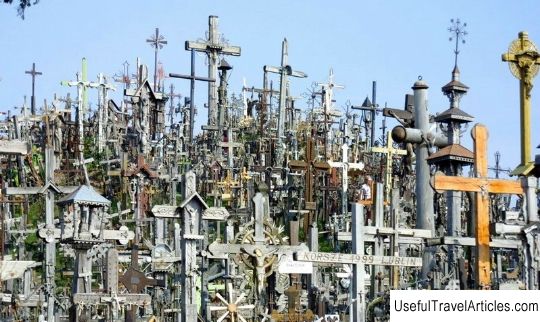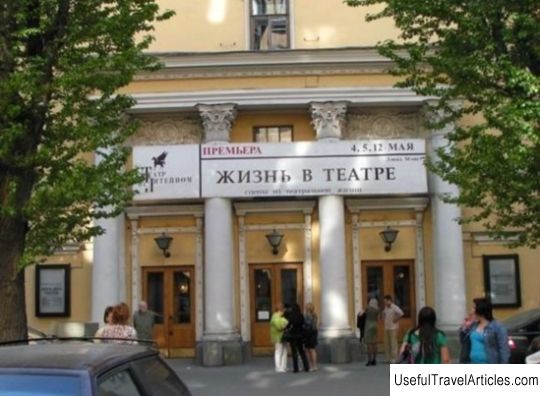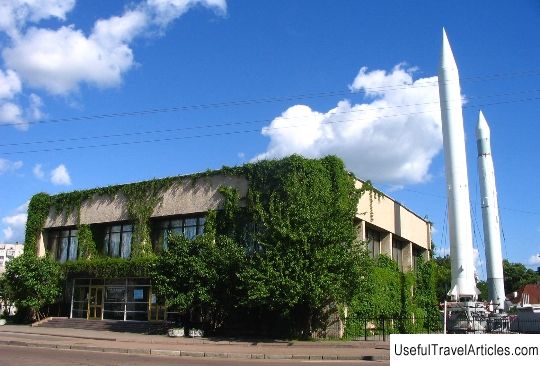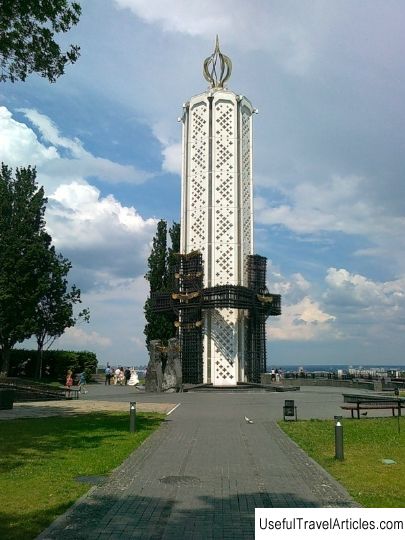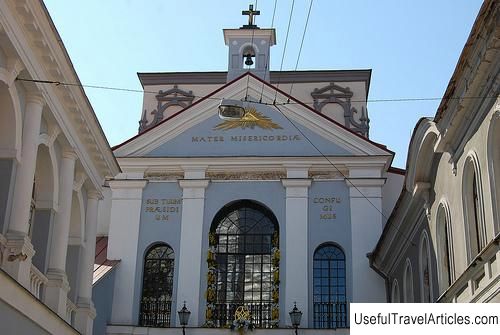Three crosses (Triju Kryziu paminklas) description and photo - Lithuania: Vilnius
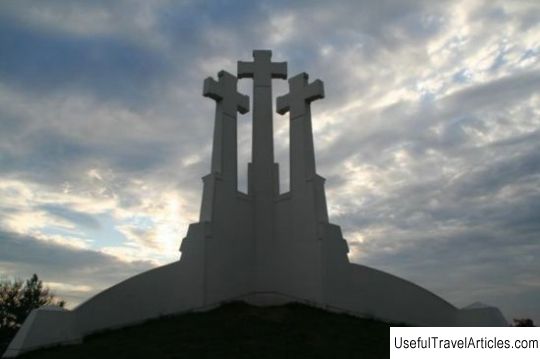
Three crosses (Triju Kryziu paminklas) description and photo - Lithuania: Vilnius. Detailed information about the attraction. Description, photographs and a map showing the nearest significant objects. The name in English is Triju Kryziu paminklas. Photo and descriptionOne of the landmarks of Vilnius is the Three Crosses - a monument that is three white crosses directed into the sky. This monument is located at the very top of the hill in Kalnu Park, which also carries a symbolic and religious symbol of Vilnius. The top, located in the park, is called the Three-Cross Mountain, and earlier it was famous as Crooked or Bald Mountain. The mountain is located on the right bank of the Vilnia. As you know, Lithuania remained in the shadow of paganism longer than other European countries. The religion of Lithuania at that time resembled the cult of the Scandinavian Aezir, with only few differences in the pantheon of gods. The official date of the adoption of Christianity in this country is 1387, because it was in this year that the prince of the Grand Duchy of Yagaila, as well as the heir to the Gediminovich dynasty, Prince Vytautas, decided to christen the country according to the customs and traditions of the Catholic Roman Church. Attempts to convert pagans to the real faith previously turned into failure, because missionaries were always executed. At the end of the 17th century, a legend was recorded according to which, in the absence of Prince Olgerd, as well as the governor of Gashtold due to the war, the Vilna pagans attacked the Franciscan monks, whom Gastold settled in his house at the request of the Christian wife. Seven people were executed right on the market, while the rest of the seven managed to escape. The escaped monks were found on the banks of the Vilenka River - there they were thrown from Lysaya Gora into the river. Some stories tell that the monks were first tied, and then nailed to the crosses, and then thrown into Vilenka. Another legend said: four monks were thrown into the river, the remaining three were executed on crosses, leaving them on Lysaya Gora. On the banks of the Vilna River in the 13th century, the Crooked Castle stood, but in 1390 it was burned by the crusaders, and after this he never recovered. On this very place, where the castle was previously located, three wooden crosses were erected in memory of the painful death of the Franciscan monks. In 1740 they were replaced with new ones due to dilapidation. In 1869 the crosses collapsed, but the authorities did not give permission for their renewal. In 1916 (during the First World War), Vilnius was taken by the Germans and then, on the initiative of Kazimir Mikhalkevich, money was collected for the construction of the monument , only made of more durable material. A considerable difficulty was the delivery of the necessary building materials to the hard-to-reach and high hill, which could only be brought by hand. The work took two months. The crosses were designed by Anthony Vivulsky. Unbeknownst to the German authorities, the crosses were illuminated by priest Kazimir. But as soon as the war ended, the Soviet authorities ordered the Three Crosses to be blown up; the same fate awaited numerous other religious monuments, which after the destruction were simply buried or were removed in parts. After these events, people's hopes did not fade, and after the campaign in 1989, the monument to the Three Crosses was nevertheless restored ... Signatures were collected, as well as appeals to the authorities, before which the government simply could not resist. Thus, on the day of Sorrow and Hope, namely June 14, 1989, the religious monument of the Three Crosses was nevertheless restored. It took two weeks of work to restore the monument. The new monument carried the function of tribute and memory to all victims of Stalinism, because it was on the day of Sorrow and Hope that the authorities laid the foundation for Stalin's exile. The Three Crosses Monument was designed according to the sketches of the architect Henrikas Silingas, and took over the direct work sculptor Stanislovas Kuzma. The new monument faithfully reproduces the earlier structure designed by Anthony Vivulsky, but it is 1.8 meters higher than the previous one and painted with a lighter white paint. The monument was consecrated by Cardinal Vincentas Sladkevicius. Until now, next to the new crosses lie the remains of the crosses blown up long ago, which serves as a kind of reminder of the tragic events in the history of this country,         We also recommend reading Bridges of Aberdeen description and photos - Great Britain: Aberdeen Topic: Three crosses (Triju Kryziu paminklas) description and photo - Lithuania: Vilnius. |
